Grocery shopping: a necessity, yes, but also a labyrinth of choices, deals, and temptations. If you’ve ever left the supermarket questioning how you ended up spending so much, you’re not alone.
There’s no shortage of advice out there on how to save money on food shopping but let’s face it—most of it is buried in the far reaches of the internet, hard to find and even harder to implement. So, to save you time and effort, we’ve scoured the web and rounded up every single useful piece of advice we found on cutting grocery costs.
This list includes tips you’ve probably never even considered, as well as gentle reminders of those tricks we all know but tend to forget. Follow just a few of these, and you might leave the supermarket wondering how on earth you were able to spend so little.
1. Make a list of things you don’t need to buy and stick to it.
Senior food editor at Epicurious, Anna Stockwell, offers a unique tactic for saving money on food shopping: add a “do not buy” section to your grocery list. Write down items that you’ve decided are unnecessary or don’t fit your goals, such as packaged cookies, sugary snacks, or fizzy drinks.
Having this list as a guideline keeps you disciplined while shopping and helps avoid temptations. Consider keeping this list on your phone or somewhere accessible while shopping.
2. Go straight for the dairy aisle.
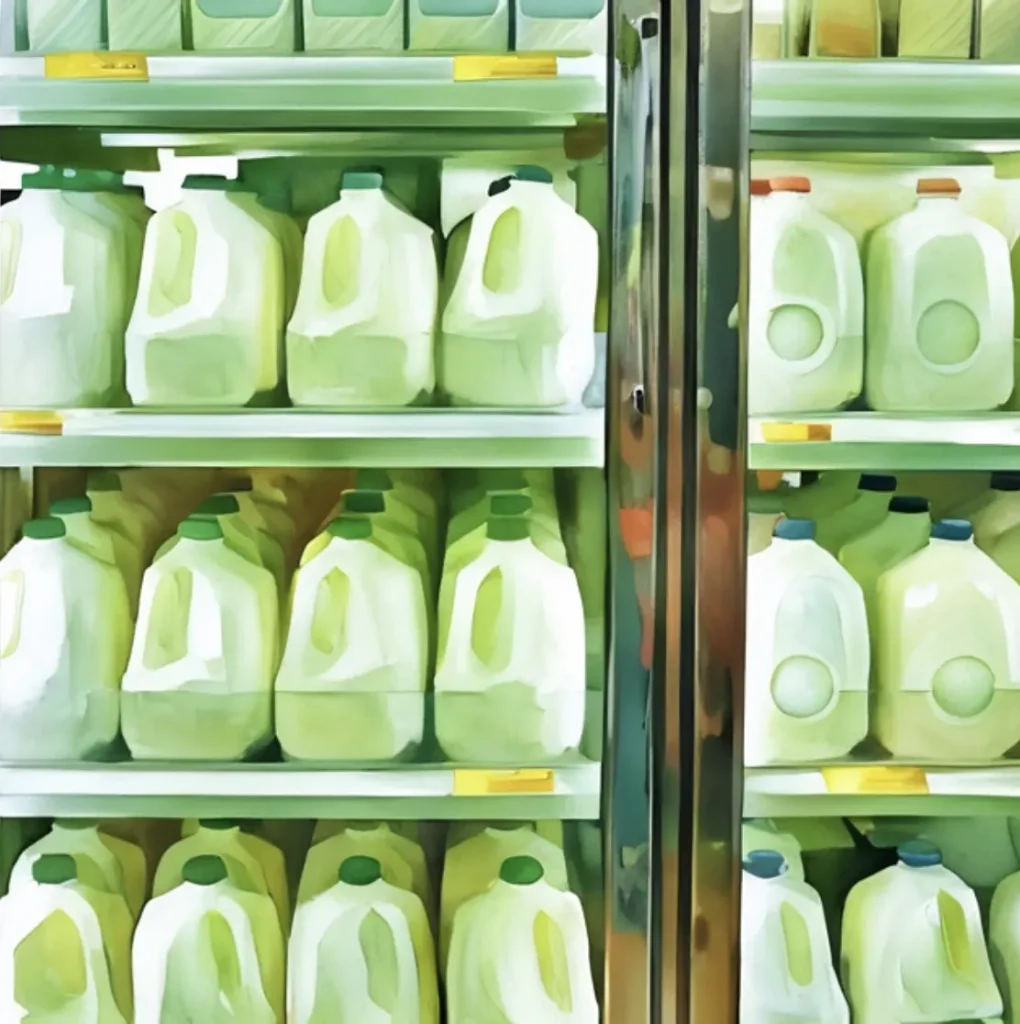
Matt Granite, also known as The Deal Guy and YouTube’s first-ever 24/7 deal finder, revealed that supermarkets are sneaky when it comes to where they place their dairy items.
Since dairy is almost always on everyone’s shopping list, stores place it at the very back, ensuring that you walk through the entire store first. This means you’ll likely pass tempting snacks, impulse buys, and other non-essentials.
To avoid those sneaky temptations, head straight to the dairy aisle first—ignore the distractions, grab what you need, and get out before your cart fills up with things you didn’t plan for.
3. Go for the store brand—it’s essentially the same product, just cheaper.
Emma Munbodh from The Times Money Mentor shares a tip for slashing your food bill—switch to the supermarket brand, or a cheaper competitor’s version.
It’s easy to assume that big brand-name products are automatically better, but that’s not always the case—especially for many common grocery items. But often, store brands are produced by the same manufacturers as the name-brand products, just without the fancy packaging and marketing that drives up the cost.
Products like bleach, table salt, flour, and baking soda typically don’t vary much in quality, so there’s no need to pay a premium for the big-name label. If it’s a basic item that serves its function without any added frills, going for the cheapest option is the way to save money.
4. Stock up when prices hit their annual low.

Certain items have specific months when their prices drop to their lowest levels, often due to seasonal sales or overstock clearance.
For example, as The Sun reports, items like turkeys or hams are often heavily discounted after the holidays, while other goods like school supplies, canning jars, or baking ingredients may be cheaper during back-to-school seasons or summer.
Pay attention to when these discounts hit their lowest points and stock up then. Buying in bulk at these times can save you money throughout the year.
5. Take with you only the amount of cash that you need.
A clever way to keep your food shopping in check is by withdrawing only the amount of cash you predict you’ll need. This keeps you focused on your list and prevents overspending.
Kathleen Elkins, a correspondent at Business Insider, shared how using only a set limit of cash for two weeks changed the way she approached spending. By limiting herself to a set amount, she became more conscious of her purchases, which helped her prioritise essential items. This method can be especially effective when grocery shopping—seeing your cash dwindle as you shop will make you think twice about unnecessary items.
This simple step should help keep you focused on your shopping list and ensure you’re sticking to your budget—after all, you can’t spend what you don’t have!
6. Make friends with the butcher at your supermarket.
Frugal Reddit users often share their best grocery shopping hacks, and one tip that comes up repeatedly is this: make friends with your butcher. If you’re looking for bones to make stock, for instance, they might offer them to you at a steep discount—or even for free.
This aligns with advice shared by former journalist Giselle Wainwright in The Sun: don’t be shy about chatting with your butcher. Ask them what the best deals are for the week, and if it’s an unfamiliar cut, seek their advice on how to prepare it.
Butchers can also suggest cost-effective ways to use less expensive cuts of meat. Building a good relationship with your butcher can lead to budget-friendly meals and some invaluable cooking tips!
7. Don’t be fooled by “fresh” seafood labels.

When shopping for seafood, the word “fresh” can sometimes be misleading. Most seafood labeled as “fresh” has actually been previously frozen. For example, shrimp, tuna, and salmon are often frozen soon after being caught to preserve their quality, and then thawed and labeled as fresh when they hit store shelves.
To maximise your budget, Seafresh UK suggests that instead of paying more for “fresh” seafood, opt for the frozen version—they’re typically half the price, and still just as good in terms of taste and texture.
8. Check your store’s app for hidden discounts not shown in-store.
According to lifestyle coach Kiran Singh, a smart way to save before heading to the supermarket is by checking your store’s app. Many retailers like Lidl or Aldi offer digital coupons, app-only discounts, or personalised deals that aren’t advertised in-store.
You might even stumble on markdowns on your favorite products, BOGO (buy-one-get-one) offers, or even earn loyalty points that you can use for future savings. Taking a few minutes to browse the app could lead to some great discounts!
9. Stay away from anything pre-packaged.
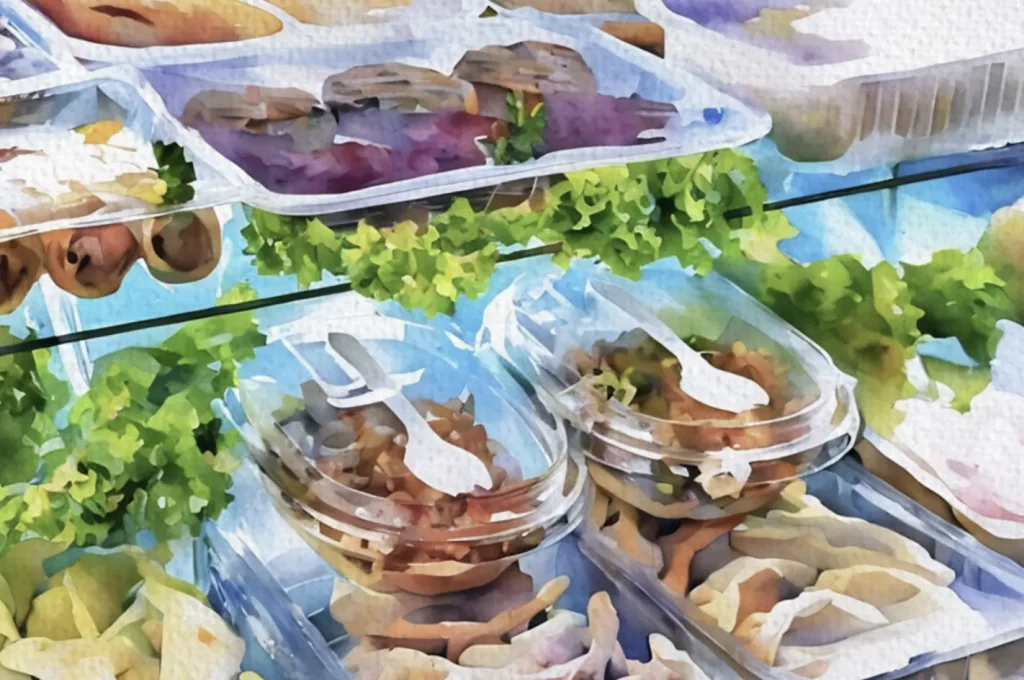
Gina Zakaria, who has over 3 million followers on TikTok and runs a personal finance blog, Saving Whiz, shares her strategy for keeping food costs low while living in a high-cost-of-living area: she shreds her own cheese and processes her own vegetables.
Pre-sliced or pre-packaged foods, like ready-made salad mixes, shredded cheese, or frozen meal kits, often come with a significant markup to cover the extra costs for labour and packaging. Instead, buy whole fruits, vegetables, and blocks of cheese, and slice or prep them yourself. Not only will this save you money, but you’ll also be able to stretch your grocery budget further.
10. Buy rotisserie chickens instead of raw.
Alright, here’s one exception to the “avoid prepackaged foods” tip: go for rotisserie chickens instead of raw. Writer and editor Robert Haynes-Peterson explained in Yahoo Life that grocery stores often use raw chickens nearing their sell-by date to make rotisserie chickens. Rather than waste perfectly good meat, stores cook and sell these chickens at a lower price, using them to reduce waste and draw in customers.
This means you’re not just saving money but also getting a convenient, ready-to-eat meal. For an even better deal, look for discounted day-old rotisserie chickens. They’re just as delicious and versatile—perfect for soups, sandwiches, tacos, or meal prepping.
It’s a cost-effective and time-saving choice that’s worth bending the no-prepackaged rule for!
11. Always check the world foods aisle or ethnic food stores for cheaper versions of pantry staples.
Andy Webb, founder of Be Clever With Your Cash advises to always check the world foods aisle or ethnic food stores for cheaper versions of pantry staples. Items like rice, beans, lentils, and spices are often available at lower prices in international sections.
For example, you can find a 5kg bag of Annapurna Basmati Rice for £15.99, compared to £24.39 for a local brand like Tilda. By exploring these options, you’ll save money without sacrificing quality, making it a smart choice for your grocery budget.
12. Preserve your herbs instead of buying new ones weekly.

Preserving your herbs is a smart way to save money and reduce waste—a tip shared by the blog Simple Frugal Life. Instead of constantly buying fresh herbs that might go bad quickly, you can dry them in a warm, shaded spot and store them in jars, or freeze them in ice cube trays with water or oil for easy use later.
For added value, turn herbs into pesto, herb butter, or infused honey, vinegar, or even vodka. You can also create herb salts or sugars to enhance your cooking.
These methods not only help stretch your grocery budget but also ensure you always have flavourful herbs on hand, no matter the season.
13. Stop to do the math.
Supermarkets often manipulate unit prices to make certain items seem like a better deal when they’re not. For example, a 2.6-ounce pouch of tuna costs £6.02, which is about £2.32 per ounce. A 5-ounce can of the same tuna costs £19.59, or £3.92 per ounce. Even though the can is bigger, the pouch is actually the better deal. A quick calculation can save you money!
Here’s a guide on calculating unit pricing to help you, courtesy of the official blog of the Competition and Markets Authority.
14. A clever tip on how to save money on food shopping—check out the top and bottom shelves.

Oli Townsend and Georgia-May Collings, editor and writer (respectively) at Money Saving Expert, suggest paying attention to how items are arranged on the shelves. Stores often place the most expensive products at eye level, but if you take a moment to look up or crouch down, you’ll likely find cheaper, generic brands or lesser-known alternatives.
Items like pasta, cereal, and canned goods often have identical-quality options on the top or bottom shelves for a fraction of the cost.
15. Buy “marked-down” produce and prep them immediately for freezing.
Look out for marked-down produce, such as bruised apples, overripe bananas, or soft potatoes, and grab them while they’re discounted. Richard Price, director of online supermarket Britsuperstore, recommends freezing these items immediately to make the most of your purchase.
To put into perspective, bananas are perfect for smoothies, apples can be used in pies or crumbles, and potatoes can be mashed or diced. Freezing them ensures you save money while reducing food waste!
16. Look for “yellow sticker” reductions at the end of the day in Tesco or Sainsbury’s.
Heading to Tesco or Sainsbury’s in the evening can be a goldmine for budget shoppers. According to news site Chronicle Live, most stores start slashing prices on perishable goods nearing their sell-by date usually after 5pm, marking them with distinctive yellow stickers.
During this time, you may be able to find steep discounts on items like fresh produce, meat, dairy, and bakery goods. These reductions often go up to 75%, allowing you to stock up for a fraction of the cost.
17. Score sweet deals during bakery happy hour.
If you’re a Lidl Plus app user, make sure to take advantage of the store’s popular “bakery happy hour.” After 7 pm, you can get a coupon for 20% off all baked goods, making it a perfect time to grab fresh bread, croissants, bagels, or even doughnuts at a discount.
Simply activate your coupon in the app before you shop, and keep an eye out for the orange-labeled products for further markdowns.
Plus, don’t forget you can get a free doughnut on your birthday! It’s a tasty way to save without breaking the bank.
18. Buy discounted “wonky veg” boxes—they’re cheap and eco-friendly.

Did you know that there are websites, local stores, and even apps that offer “wonky veg” boxes at a steep discount?
Money blog Mouthy Money is one of many advocates for buying these wonderfully peculiar-shaped produce. These boxes are filled with imperfect but still perfectly edible produce—think misshapen carrots, potatoes with funny bumps, or slightly bruised tomatoes.
While these veggies might not be pretty enough for a fancy display, they’re perfect for cooking up soups, stews, or roasting. By buying these wonky boxes, you’re helping reduce food waste while saving a ton of money!
19. Shop smart by timing your grocery tips.
For the best savings on groceries, money and lifestyle reporter Amber O’Connor recommends timing your shopping trips to align with store restocks and new promotions.
Wednesday and Thursday are key days when stores restock and introduce new promotions, meaning you’ll find fresh inventory and fresh discounts. Tuesdays are ideal if you’re looking for the week’s specials. Mondays are a great day for clearance sales, especially for perishable items like produce and baked goods that need to move quickly.
By shopping strategically, you’ll be able to find better prices on both fresh and discounted goods, making your grocery bill easier to manage.
20. If you do a lot of food shopping online, sign up for accounts on cashback apps.
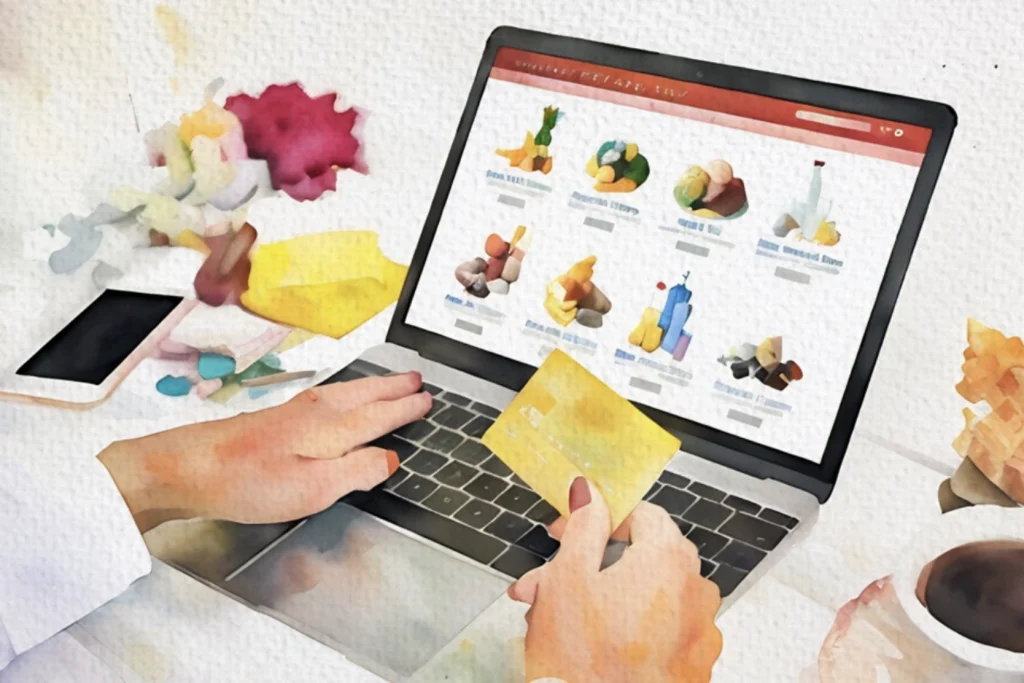
Cashback apps Quidco, TopCashback, or Airtime make saving money easy when shopping online. These apps give you a percentage of your purchase back as cash or rewards, letting you save on everything from groceries to household essentials.
You can even try stacking your savings with store coupons and loyalty programs. To make things even simpler, London Daily News has a guide to help you maximise these handy money-saving apps!
Over time, your small savings from cash backs can add up to a significant chunk of change, all for purchases you were going to make anyway.
21. Try intermittent fasting.
If it aligns with your lifestyle and health needs, intermittent fasting can naturally reduce the number of meals or snacks you need to buy and prepare. For example, skipping breakfast or having a smaller eating window might mean fewer groceries in your cart overall.
First shared in a Reddit thread that has since gone viral, the user revealed that since she started fasting intermittently, her food budget is now 60% of what it used to be!
However, remember it’s essential to prioritise balanced, nutritious meals during your eating periods to maintain good health. Always consult with a healthcare provider before making significant changes to your eating habits.
22. Consider adding a small amount of water to your detergent to make it last longer.
Laundry care guide blog Textile Affairs suggests adding water to powdered detergent to stretch it further, which makes it last longer without sacrificing effectiveness.
By using less detergent per load, you’ll not only extend its life but also reduce the need for frequent purchases, ultimately saving you money over time.
23. Go to refill stores to buy items like rice or pasta without paying for packaging.
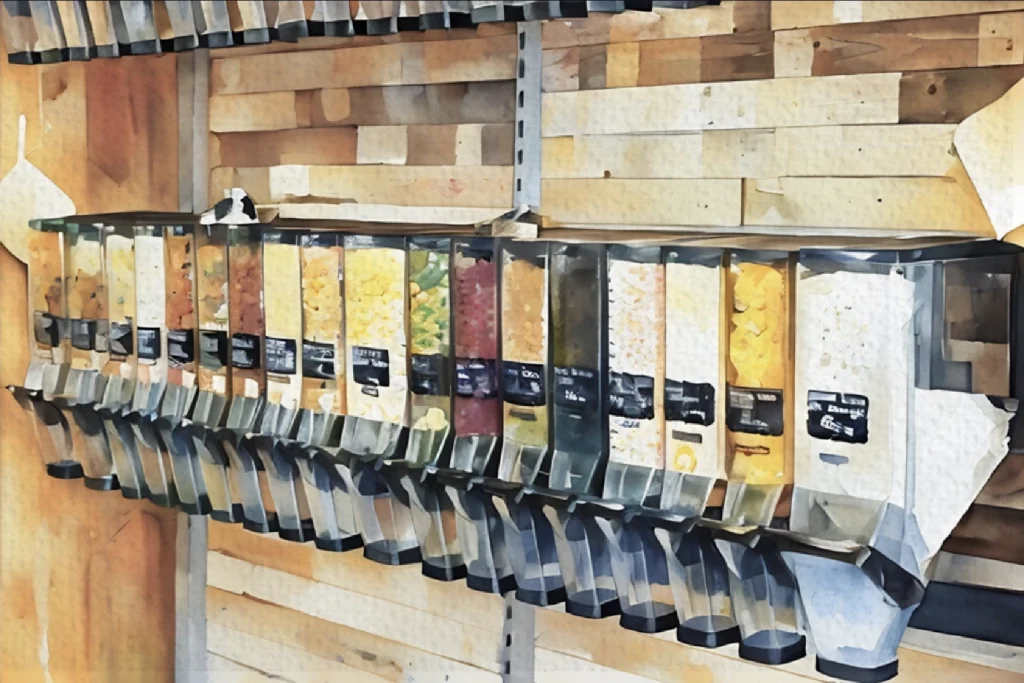
Refill stores are a great way to buy essentials like rice, pasta, flour, or spices without paying extra for packaging. As highlighted by Gena Money, co-owner of Bulk Refillery, these stores offer the added benefits of reducing waste and saving money.
By bringing your own containers, you can weigh out exactly what you need, making it a more cost-effective option compared to pre-packaged items.
Plus, purchasing in bulk often means you’re getting a cheaper price per gram. Not only are you saving money, but you’re also helping the environment by cutting down on single-use plastics.
24. Purchase the products you like to use when they’re on sale so you don’t have to pay full price when you need them.
In his YouTube video Grocery Hacks for Frugal People, personal finance expert George Kamel relays a money-saving tip shared by a member of the Ramsey Baby Steps Millionaires Facebook group: buy products you regularly use when they’re on sale. Whether it’s pasta sauce, coffee, or cleaning supplies, purchasing in bulk during sales helps you avoid paying full price when you run out.
This strategy works especially well for non-perishable items. Just be sure to store them properly to preserve their shelf life and make the most of your savings.
25. Buy a Surprise Bag from TooGoodtoGo.
Check out the Too Good to Go app for a fun way to save money with Surprise Bags (formerly known as Magic Bags). Lindsay Dodgon, senior reporter at Business Insider, spent a week using only the Too Good to Go app for her groceries and reported she saved £50 overall!
For only £3.50, you can get a bag of surplus food from stores like Aldi, worth at least £10. The contents vary depending on what the store has available that day, but you might find a mix of fruit, vegetables, bakery items, and sometimes meat. While the items may be close to their expiry date or slightly damaged, they’re often still perfectly usable.
Surprise Bags are usually available for pickup near closing time, as stores wait to see if their discounted items sell first. Keep in mind that cancellations can occur at the last minute, so it’s more of a spontaneous opportunity than a guaranteed deal, but it’s a fun way to snag a bargain while helping reduce food waste.
26.Cook at home, make double batches, and freeze them.
Justine, another member of the Ramsey Baby Steps Millionaires Facebook group, shared a clever strategy for saving money on groceries: cook different meals in large batches.
By making double portions of family favorites like lasagna, chili, or casseroles, you can enjoy a fresh meal and freeze the rest for later. A single pan of lasagna, for example, can feed a family of four for several meals, stretching your grocery budget further.
Too busy to cook at home? Cheffo connects you with affordable chefs who can do the cooking for you. Save time, reduce food waste, and still stick to your budget—after all, eating well doesn’t have to cost a fortune.
27. Grow your own produce.

Multiple award-winning freelance journalist, Donna Ferguson, shared in The Guardian that growing your own fruits and vegetables can be an easy and cost-effective way to enjoy fresh produce.
Even a small container garden can yield a surprising amount of food! Herbs like basil, parsley, and mint grow well in small pots, while vegetables like tomatoes, lettuce, and peppers thrive in containers on balconies or windowsills.
By growing your own produce, you reduce grocery bills and enjoy the satisfaction of picking fresh ingredients straight from your garden.
28. Buy more frozen fruits and vegetables than fresh.
If you’re not into gardening, you can still save costs on food shopping by buying frozen fruits and vegetables instead of fresh, and the Frozen Food Revolution will attest to that. They’re not only budget-friendly but also packed with nutrients.
Unlike fresh produce, which can spoil quickly, frozen options stay good for months, minimising waste. Stock up on frozen berries for smoothies or vegetables like spinach, peas, and broccoli for easy meal prep.
You’ll save money and always have healthy options on hand without worrying about spoilage.
29. Take pictures of your fridge or pantry before you leave.

Ever gone shopping only to realise you already had enough of one item—like your third jar of marinara sauce or yet another bottle of ketchup?
To prevent this, here’s another useful tip from The Deal Guy: snap a quick picture of your fridge or pantry before you head to the store. It’ll help you keep track of what you’ve already got, making it easier to avoid duplicate purchases and keep your grocery bill in check.
30. Remember that just because it’s ‘on sale’ doesn’t mean it’s a good deal.
A great tip from Save the Student on how to save money on food shopping: be wary of bad food shop deals. It’s easy to get caught up in the sale mentality and purchase things you don’t really need.
Keep in mind that retailers sometimes inflate the original price to make the discount seem bigger than it is, so it’s worth checking the price elsewhere or looking at price history. Bulk deals might seem like a good bargain, but if you’re not going to use everything before it expires, it’s not worth it.
Always take a moment to think if the sale item is something you truly need, or if you’re just buying it because it’s discounted.
31. Always join a supermarket’s loyalty program.

Sarah Butler, journalist for The Guardian, writes that supermarket loyalty programs can be your ticket to better prices and exclusive discounts.
While it’s true that you’ll probably get a few extra emails (some may feel like spam), the benefits usually outweigh the inbox clutter. Loyalty members often get access to member-only promotions, personalised deals, and sometimes even extra savings on in-store purchases.
Over time, these discounts add up, especially on regular grocery items you buy each week.
32. Have breakfast for dinner (or every meal).
The Inside Edition featured Beck Guiles, the most frugal mom in America, in a YouTube video on “Money-Saving Tips for Grocery Shopping”, in which she recommends having breakfast meals for dinner!
It makes sense—breakfast staples like eggs, oatmeal, toast, or pancakes are often cheaper than traditional lunch or dinner options. Swapping out pricier proteins or elaborate dishes for simple breakfast foods can stretch your grocery budget significantly.
Breakfast for dinner is not only cost-effective but also quick to prepare and fun for the whole family.
33. Swap out your liquid broth for bouillon (cubes, powders, pastes).

As food news site The Tasting Table writes, your wallet will thank you for this super simple broth swap.
Liquid broth is often sold in large containers that may be used up quickly, while bouillon products are much more affordable and have a longer shelf life. With bouillon, you only use what you need, which helps prevent waste and ensures you get the most out of your purchase.
This means you spend less on groceries over time while still enjoying the same flavour in your meals.
34. Get a delivery pass for when you shop online.
Sara Benwell, writer for The Sun consumer section, recommends purchasing a delivery pass if you do a lot of food shopping online. You might be able to save as much as £208 on a weekly shop!
Many supermarkets, like Sainsbury’s and Morrisons, offer delivery subscription services that allow you to pay a set fee for delivery over a period of time. For example, you can choose from options like an anytime pass or a midweek pass (for deliveries on Tuesday to Thursday) in monthly, 6-month, or annual plans.
These passes can help you save on delivery costs, especially if you regularly order from the same store. The longer the term you commit to, the more you can save.
Plus, if your savings don’t cover the cost of the pass, some stores will offer a voucher to make up the difference, giving you even more value for your money. Just remember to set a reminder to check if you want to renew it before it expires!
35. Build your meal plans based on what you often find on sale.
Ashley Nard, founder of gym Bad Ash Athletics, believes that a little extra effort can make a big difference: track your grocery store’s sales cycles.
Keep a simple spreadsheet to log the prices of your regular purchases. Over time, you’ll spot patterns and know when your staples—like chicken, rice, or coffee—are at their lowest prices.
When you see a sale, stock up on those items and adjust your meal plans to incorporate them, swapping out pricier ingredients for discounted ones. It’s a smart way to save while still enjoying a variety of meals.
36. Use Google Shopping to compare prices.
Another tip from Richard Price is to use Google Shopping when you’re at the supermarket, especially if you spot a promotion in-store but aren’t sure if it’s a good deal.
This will show you how much competitors are selling the same product for, helping you make an informed decision and ensure you’re getting the best price.
37. Don’t be afraid to try out those snack and soda dupes.

Many stores offer alternatives to well-known branded items, often with similar packaging, taste, or design, but at a fraction of the cost.
For example, Aldi is known for its range of food and drink dupes—news site Teesside Live even put together a list of five Aldi swaps that can save you £25 on your monthly food bill. Here you’ll find alternatives to popular branded items like their versions of famous sodas, snacks, and even breakfast cereals.
These products may not always have the same packaging flair or high-end feel, but they offer a great way to save money while enjoying similar tastes.
38. Take up those new customer offers when you sign up for apps or loyalty programs.
Money Saving Expert blog contributors Georgia-May Collings, Juliet Francis, and Becky Mott point out that many supermarkets offer online discounts for new customers. For example, you may find a voucher offering £15 off a £80 shop or £10 off a £50 order, often available for the first few purchases.
These types of promotions are a great way to save significantly on your grocery bill, especially if you’re new to online shopping or trying out a supermarket for the first time.
39. Check the Pick of the Week at Lidl.
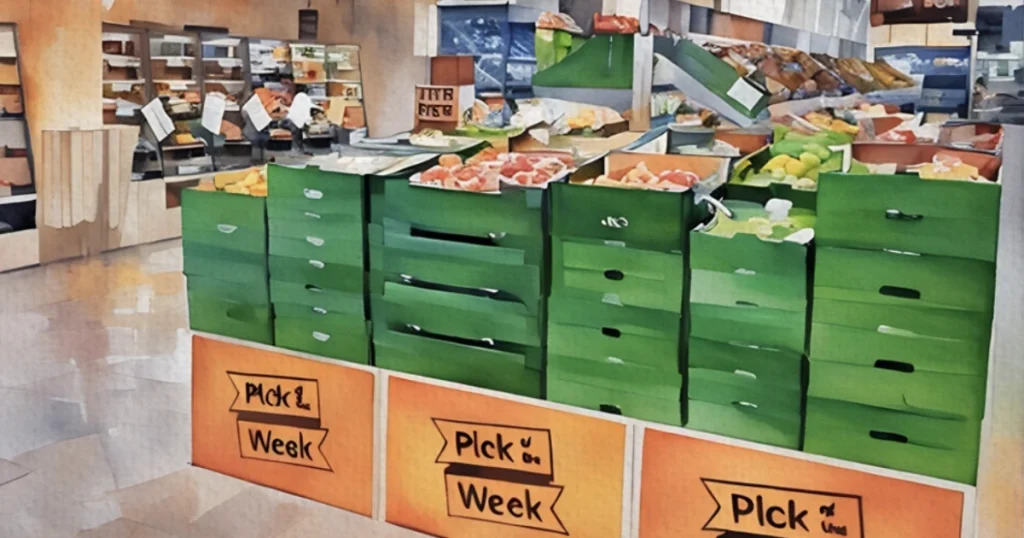
Every Thursday, Lidl offers special deals as part of their “Pick of the Week” promotion – and Chloe’s Deal Club insists you make the most out of it! This includes discounted fresh fruit and vegetables, as well as limited-time offers on meat, fish, and themed events like wine tours or garden supplies.
You can find these offers highlighted in-store, on the Lidl Plus app, and on the Lidl website. Keep an eye out for these deals at the end of the aisles or near the store entrance for a quick reminder while you shop.
40. Don’t be too worried about the expiry date printed on the package.
Expiry dates are often more about ensuring products are sold at their peak freshness rather than when they’re unsafe to consume. Consumer champion brand Which? attests that supermarkets tend to be overly conservative with these dates, often pushing customers to buy new items before they’ve even finished the current ones.
For many pantry items, such as canned goods, pasta, or grains, the product may still be good for weeks or even months beyond the expiration date. But still, trust your senses—smell, taste, and inspect the product before discarding it just because the date is approaching.
41. Extend your meat budget by adding pulses to your meals.
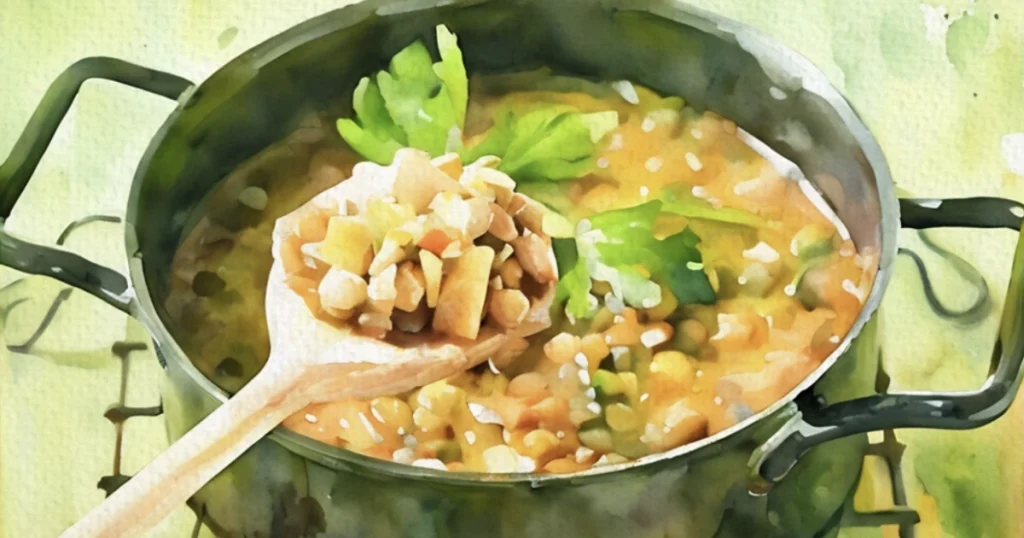
According to the British Heart Foundation, one of the best ways to save money on groceries is to swap out some of the meat in your meals for pulses like beans and lentils.
This is because while meat is costly, pulses are often more affordable—plus, they’re a great source of protein and iron. You can also try bulking up the recipe with extra vegetables or grains (like rice or quinoa). For example, in a chicken stew, using five chicken thighs instead of ten and adding more carrots, potatoes, and broth not only saves money but also increases the dish’s nutritional value and fibre content.
By adding these ingredients, you can reduce the amount of meat you need, still enjoy hearty meals, and significantly cut down on food costs.
42. Buy common supermarket items at your local drug store instead.
Here’s another tip from The Deal Guy, first shared in his video, 10 Grocery Shopping Hacks That Will Save You Money—it’s worth checking out your local pharmacy or drugstore for commonly purchased items before you grab them from the grocery store.
It might surprise you, but many everyday items—like over-the-counter medicine, beauty products, snacks, and even non-perishable food—are often cheaper at drug stores than in supermarkets. Drug stores have smaller markups, plus they sometimes offer weekly deals, discount cards, or coupons that help reduce costs.
43. Don’t be afraid to ask for a price match.
In another blog post from Be Clever With Your Cash, we learned that price matching can actually be quite advantageous!
Tons of stores have a price adjustment policy that allows you to get the difference refunded or credited back if an item goes on sale after you’ve bought it. However, these policies aren’t always prominently displayed, so you might miss out on them. You can bring in your receipt after the price drops and ask for a refund or store credit.
This can work out especially well for high-ticket items that may have major discounts later in the season.
44. Use a shopping basket.
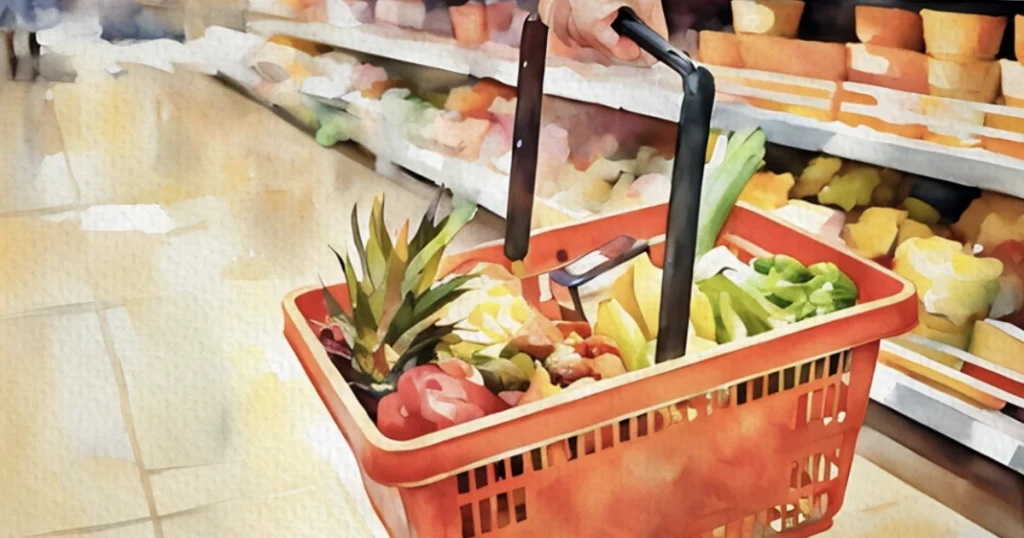
According to The Sun news reporter Fiona Connor, one clever way to avoid impulse purchases is to use a shopping basket instead of a trolley.
While a trolley might seem like a necessity when you’re shopping, it actually works against you by creating a sense of extra space. When there’s more room in the cart, we often feel compelled to fill it with more items.
By using a basket, you naturally limit the number of items you can carry and are more likely to stick to your list and budget. It’s a simple trick, but it’s an effective way to keep your spending in check without the temptation of a cart.
45. Buy non-perishable items in bulk.
Buying non-perishable items in bulk is another clever way to save money on your grocery bill. Products like rice, pasta, canned goods, and spices are often much cheaper per unit when bought in larger quantities. Not only does this save you money upfront, but it also reduces the frequency of grocery trips, helping you avoid impulse buys.
A forum thread on Mumsnet, UK’s biggest network for parents, delves deeper into this, with users sharing additional tips and creative solutions for maximising bulk purchases. As long as you have the storage space, stocking up on these essentials ensures you’re prepared and can stretch your grocery budget further over time.
46. Install ad-blockers and unsubscribe from store marketing emails.
Limiting your exposure to advertising can help you stick to your shopping budget, says Richard Price in a post on The Mirror. This is especially helpful during the holidays when marketing campaigns are in full swing. Start by unsubscribing from promotional emails or using browser ad-blockers to cut down on temptations.
Social media is another source of impulse-buy triggers, particularly with its constant stream of gift ideas and special offers. Consider reducing your time on platforms where you’re most likely to see targeted ads.
By doing this, you can focus on buying only what you truly need, rather than being influenced by what’s being suggested to you.
47. Make your own oat milk.

Store-bought plant-based milks can be pricey, but money and lifestyle blog Lylia Rose affirms that making your own oat milk is both cost-effective and easy. Blend oats with water, strain the mixture, and voilà—fresh oat milk!
Homemade oat milk can be customised to your liking by adding a pinch of salt, sweeteners like dates, or even vanilla extract. Plus, it eliminates the need for excess packaging, making it a sustainable choice.
48. Be strategic about where you do your food shopping.
In a video titled “How I Save 40% On My Food Bill (Money Saving Hacks)” minimalist content creator Gabe Bult advises that you choose your supermarket strategically.
Some stores offer better deals on certain items, while others may have higher prices across the board. Consider factors like loyalty programs, sales, and overall price points when choosing where to shop. Discount chains like Aldi or Lidl often offer lower prices on staples, while larger supermarkets might have better sales on more specialised items.
By being strategic about where you shop, you can get the best deals without sacrificing quality.
49. Try the Win-Win recycling bin at Lidl.

Since February 2024, some Lidl stores in Glasgow have introduced recycling bins where you can drop off drink cans and plastic bottles. The Sun reports the experience of one delighted customer—who shared in a TikTok with over 345,000 views, that she put 21 bottles into the machine and received a total of £1.05 back in the form of a coupon.
How it works is for each item you recycle, you’ll earn a 5p reward, which can be redeemed against your grocery shopping. While the reward per item may seem small, it can quickly add up, offering a simple way to save money while helping the environment.
50. Eat before you shop.
Shopping on an empty stomach can lead to impulse buys and unnecessary purchases. As Simply Put Psych puts it, hunger tends to hijack your choices, making those extra bags of chips or tempting sweet treats hard to resist.
To avoid this, make sure to eat before heading out for your grocery run. By going to the store with a full stomach, you’ll be more focused on your shopping list and less likely to grab items you don’t need.
51. Leave the kids at home when you go food shopping.
Taking kids along can sometimes lead to extra items sneaking into the cart—snacks, treats, or toys that weren’t on the list. In fact, the Yorkshire Post reports that parents spend an average £20 more on their shopping when they take their children with them to the supermarket!
Shopping solo helps you stick to your plan, make more intentional choices, and avoid those unplanned purchases. It also makes the trip a bit quicker and more relaxed!
52. Use Scan & Go in-store.

Some supermarkets, like Asda and Tesco, offer handheld scanners that let you track your spending while you shop. Simply enter your mobile number to unlock a scanner, and you can scan and pack your items as you go.
As you scan each item, you’ll see the running total of your shopping, allowing you to stay within your budget and make adjustments before reaching the checkout.
Award-winning life coach Emma Mumford shared on her blog, “I found this (Tesco’s Scan as You Shop) was a great way to keep my costs down as it’s so easy to overspend when you’re blindly putting items in your trolley.”
You can also use the Price Check feature to verify if items are priced lower than expected, especially in sections where discounts may not be clearly marked. This helps you avoid overpaying for items and ensures you take advantage of any hidden deals, ultimately reducing your total bill.
Plus, scanning and packing as you go can help prevent impulse purchases, saving you even more in the long run.
53. Don’t get fooled—your supermarket really is moving things around all the time.
Ever noticed how products seem to move around the store every few weeks?
This isn’t random—according to Huffpost, it’s a tactic used by stores to keep you wandering around the aisles longer, increasing the chances that you’ll make impulse buys.
When stores rearrange their layout, it disrupts your regular shopping routine, forcing you to spend more time browsing unfamiliar sections. By the time you get to the back of the store or to an aisle you normally skip, you’ve probably picked up a few items you didn’t plan on buying.
Now that you’re aware of this trick, it’ll be easier to stay focused on your shopping list and avoid getting distracted.
54. Consider signing up for a Nectar card.
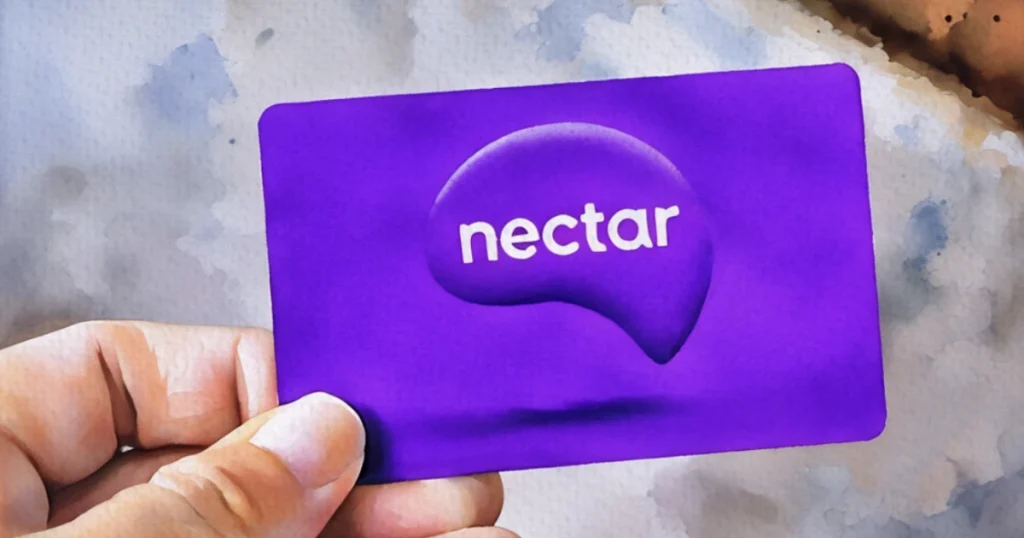
Signing up for a loyalty card like Nectar, can lead to surprising savings on everyday shopping. For example, one customer reported receiving vouchers worth £5.50 for free items: £3 off fabric conditioner and £2.50 off washing-up liquid.
Loyalty cards also allow you to collect points for every pound spent, which can be redeemed for discounts on future purchases, along with personalised coupons for bonus points or free products.
To check if you’ve been given a freebie voucher, ask the cashier for your receipt after paying. If you’re using self-service, remember to select the option to print your receipt, as it won’t generate automatically. A simple habit like this could help you save more on everyday essentials!
55. Adopt a plant-based meat plan.
Meat is often one of the priciest items on a grocery list. By cutting back on it or incorporating more vegetarian meals, you’ll save significantly while still enjoying nutritious and delicious meals.
Lentils, beans, tofu, and chickpeas are excellent, protein-packed alternatives. Even committing to one plant-based day a week, like “Meatless Mondays,” can make a noticeable difference in your spending and your overall health.
Laura Wingrove, contributor to BBC Food, has tried and tested this—she revealed, “I spent around £40 to £60 a week (…) That’s a saving of £10 to £20 a week, meaning that if I followed a vegan diet permanently it would save me hundreds each year.”
56. Limit yourself to a certain timeframe to get in and check out.
Patrick Allan from the Lifehacker blog suggests timing yourself at the grocery store to curb overspending.
The longer you stay in the grocery store, the more opportunities you have to make impulse buys. Stores are designed to keep you browsing, with end-cap displays, strategically placed “must-haves,” and products intentionally rearranged to make you search for items.
Limiting yourself to 25–30 minutes forces you to stick to your list, navigate the aisles with focus, and avoid those tempting “extras” you don’t need.
57. Shop from the Super 6 and Super Weekly Offers.
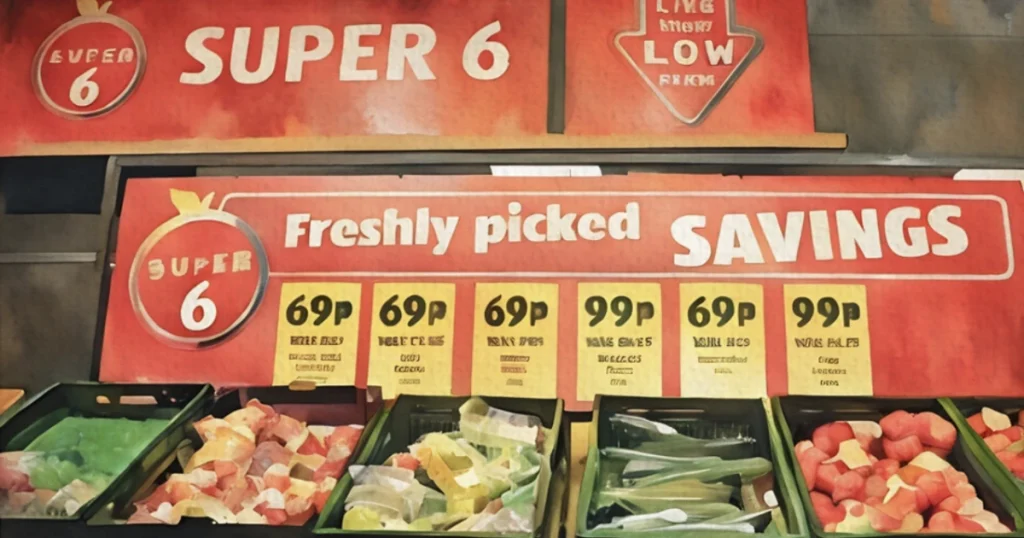
Nicky Selwood recommends in a Be Clever With Your Cash article to take advantage of Aldi’s Super 6 and Super Weekly Offers for great savings.
Every two weeks, the Super 6 offers a selection of six discounted fruit and vegetable items, including a mix of in-season British produce and more exotic options. These deals are perfect for diversifying your diet and planning meals with seasonal produce. For example, you might find sweetcorn, tomatoes, spring onions, mushrooms, apples, and peppers on offer for as low as 39p to £1.69.
In addition to the Super 6, Aldi’s Super Weekly Offers focus on discounted meat and fish, including both raw and marinated options. If you’re looking for quick, low-effort meal planning, these offers are a great way to stock up on convenient and affordable ingredients without much prep work.
Keep an eye on the deals online to plan ahead and save more.
58. Pay for your shopping with a gift card.
Apps like JamDoughnut and everup offer cashback when you purchase gift cards, which can be used for everyday purchases.
While Aldi doesn’t always offer cashback on these apps, you might find other incentives like prize draw entries or points for games with cash prizes. For example, purchasing an Aldi gift card through everup can earn you points to use in-app games, potentially earning you cashback or prizes.
Chloe Carmichael, founder of Chloe’s Deal Club, tested out this method by redeeming her earned points in the everup app’s Cashback + Spin To Win game, which resulted in £2.54 in winnings. While cashback rates are based on chance, a 2.54% return could add up, potentially covering the cost of a free grocery shop each year.
Meanwhile, with JamDoughnut, buying gift cards enters you into a free prize draw where you can win back the full value of your purchase. It’s a fun and effective way to save on your grocery bill while making the most of your shopping.
59. Consider using a cashback credit card to earn money on your grocery spending.
Journalist Felicity Hannah from personal finance site love Money suggests that if you’re disciplined with your spending, a cashback credit card can be an easy way to earn money on nearly all your purchases. For example, the Amex cashback card offers up to 5% for the first three months and up to 1.25% afterward, although it comes with a £25 fee.
If you’re diligent about clearing the balance each month, you can earn cashback on your grocery shopping, with a potential £30 a year on a weekly spend of £58. If you use your card for fuel and larger purchases, you could earn even more.
However, it’s important to ensure you don’t carry a balance, as interest charges can easily outweigh the cashback.
60. Before you hit the register, give your cart or basket one final check.
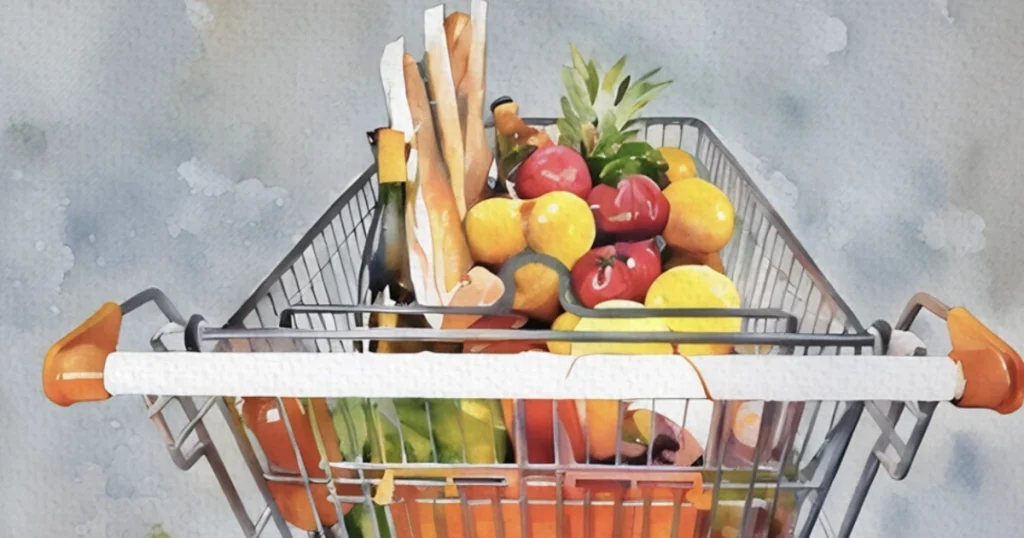
Avant author Sophie Erskine advises that before you check out, take a moment to evaluate everything in your cart. Ask yourself, “Do I really need this?”
Look for impulse purchases that crept in—like that extra bag of chips or an unnecessary treat—and remove them. This quick habit can save you a surprising amount of money over time while ensuring you stick to your plan.
61. Ask ChatGPT for help with a budget-friendly meal plan.

A viral TikTok from a mom of one showed us how using AI—specifically, ChatGPT—can completely change the way you approach food shopping. With rising food costs, she explained how this AI tool helps make her budget stretch further.
She simply asked ChatGPT to create a meal plan within her budget for a specific store. She typed in: “Please can you give a meal plan for five days with a £50 budget in Aldi?”
ChatGPT provided her a full breakdown for breakfast, lunch, dinner, and snacks, along with a shopping list categorised by meal and estimated costs. It even included recipe instructions and details like calorie counts.
This is a great, innovative way to stick to your budget while getting a variety of meals planned out for the week!
62. Don’t shop on payday.
Another tip from student money website Save the Student reminds us that shopping right after or on payday can lead to overspending as the excitement of a fresh paycheck makes it easier to justify splurges.
Instead, give yourself a day or two to plan your purchases and stick to your budget. This delay helps you prioritise essentials over impulse buys and ensures your money stretches further.
63. Follow “money influencers” for insider savings tips.

Keep up with the latest supermarket deals by following blogs, content creators, and social media accounts focused on saving money. These experts regularly share fresh tips, hacks, and exclusive offers.
Here are a few accounts to check out:
- Chloe’s Deal Club (named Money Influencer of the Year at the British Bank Awards in 2024)
- MoneySavingExpert (recurrent winner of Headline Money‘s Consumer Finance Title of the Year)
- Up the Gains (named Money Content Creator of the Year at the British Bank Awards in 2024)
By keeping an eye on their content, you’ll have a steady stream of deals and strategies to maximise your grocery savings.
64. Find someone to do your food shopping and cooking for you.
It might sound counterintuitive, but hiring a personal cook could actually save you money on groceries.
Here’s how: instead of splurging on expensive takeout or dining out, you can hire a professional chef or home cook to make restaurant-quality meals for you at a fraction of the cost. The beauty of Cheffo is that the cooks can either use ingredients you already have at home (no need for more grocery shopping) or shop for ingredients at more affordable local markets.
Plus, you can save by meal prepping in bulk or having a few dishes cooked at once, reducing the need for multiple grocery trips. Ultimately, you get better meals, more convenience, and lower costs in the long run.
Did we miss anything on how to save money on food shopping? Let us know by emailing us at magazine@cheffo.org—we’ll include it in the list and mention you. The supermarket shoppers of the internet thank you in advance!


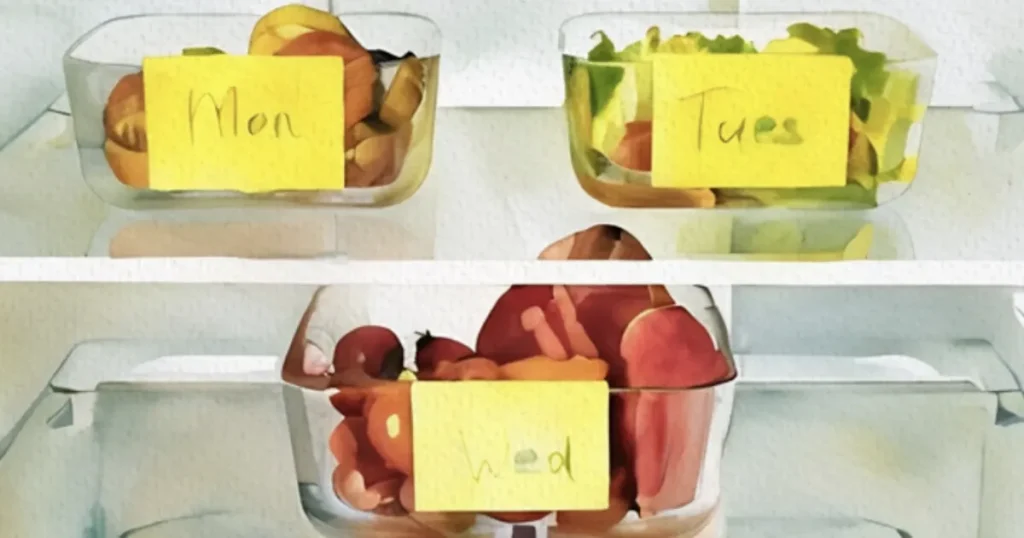
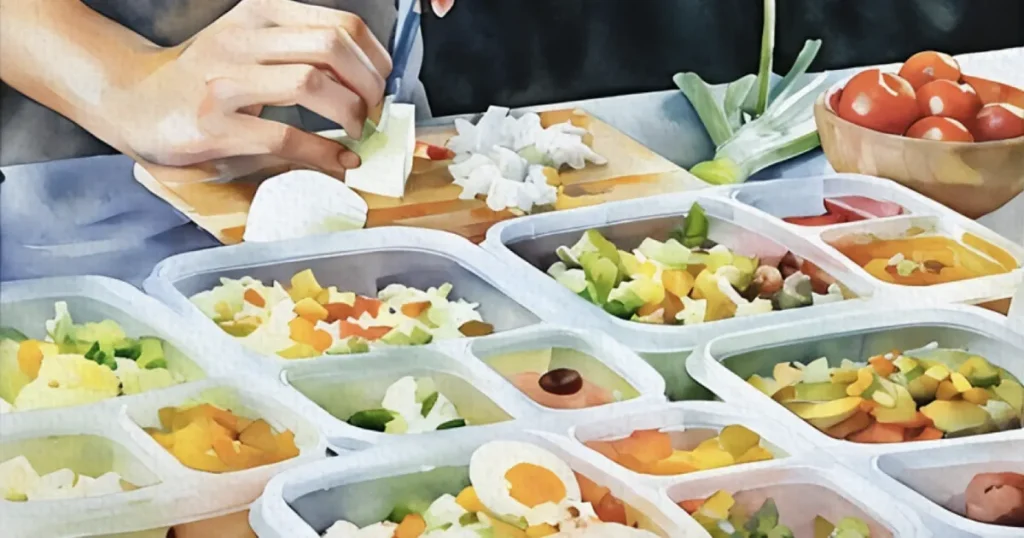



Leave a comment